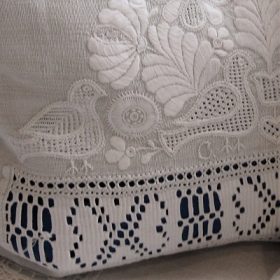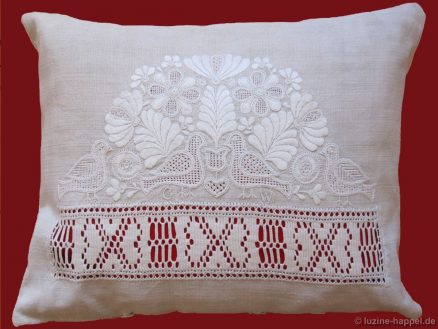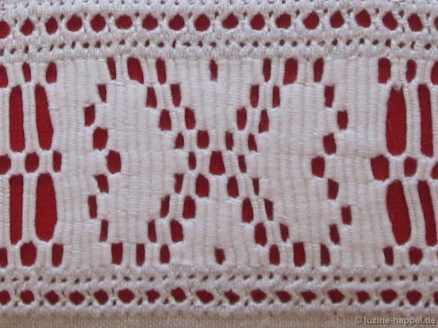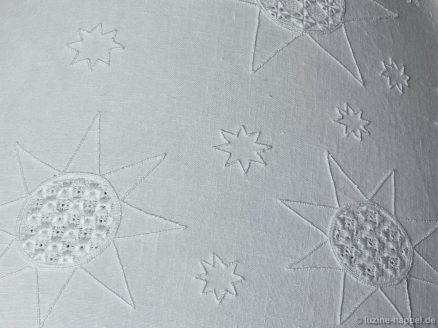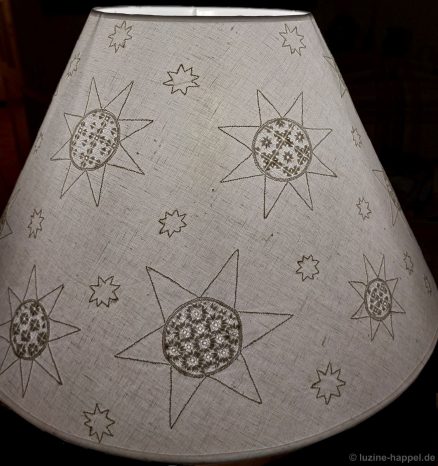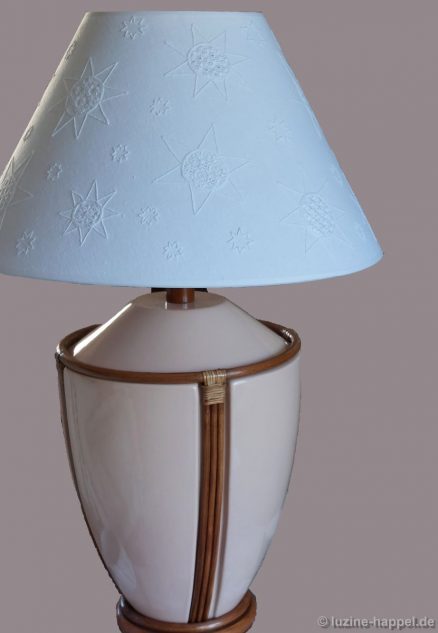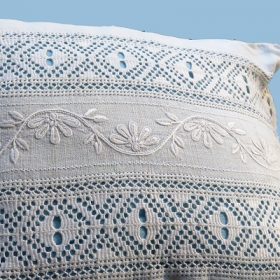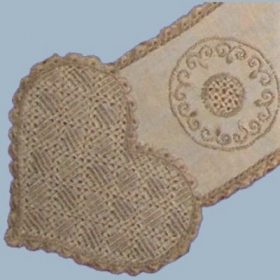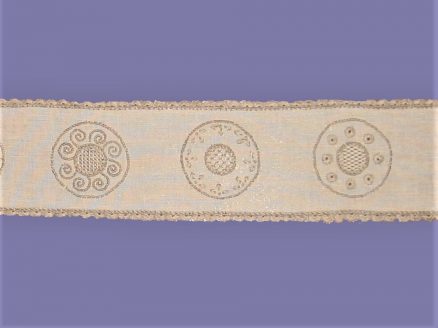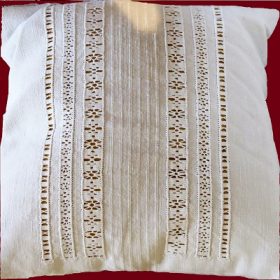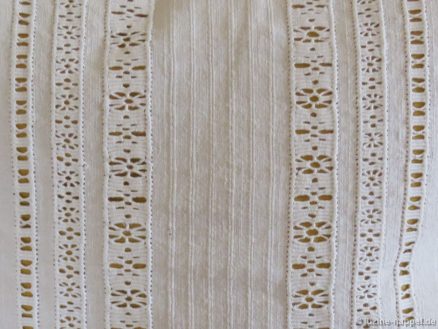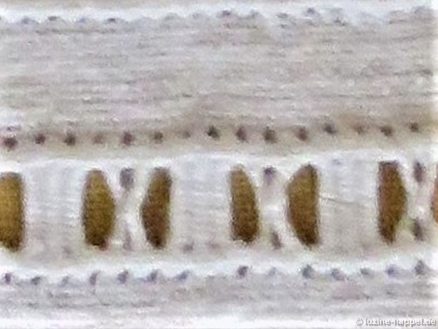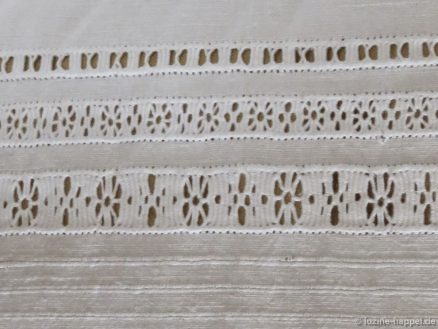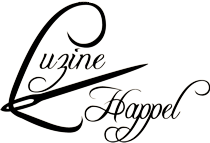No striped linen was used for this cushion, because two wide needle-weaving with peahole hems and a curved line pattern leave no room for it.

A beautiful hem combination was created by the elaborate composition: A 12-unit, divided needle-weaving hem was bordered on both sides with a double Peahole hem, bordered by two rows of Four-sided stitches.

The needle-weaving hem has a segment of 20 bundles.

The combination of a double Peahole hem with two rows of Four-sided stitches on both sides is a perfect match for this needle-weaving band.
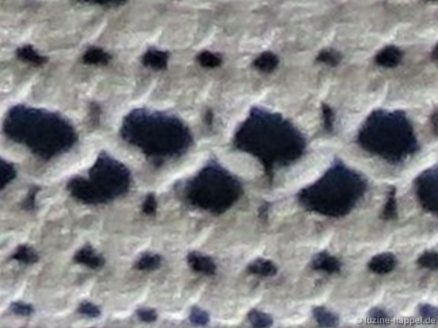
A curved line pattern takes up the space between the hemstitches. Curved lines were very popular in the Schwalm. The stitches running in wavy lines are intended to symbolize the Schwalm river, which meanders through the region, giving it its name. The wave also symbolizes the inevitable ups and downs of life in its constant state of flux. So, it is not surprising that these symbols of the wave are a common characteristic of rural Schwalm whitework. Such wave lines came in a wide variety of designs. Surrounded mostly with Satin stitch patterns, but sometimes also with drawn-thread work areas, they formed narrow borders for apron waist bands and cuffs or they framed wider motif borders with openwork patterns.
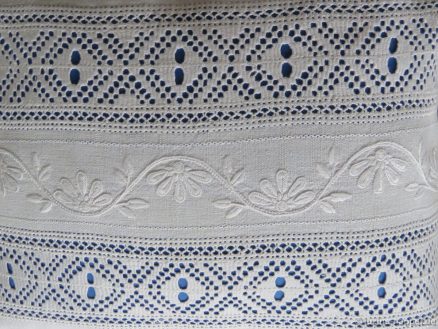
The pattern seen here is kept very calm.
Small circles of Coral Knot stitches filled with Satin stitches give rise to rounded petals, connected by Daisy stitches.
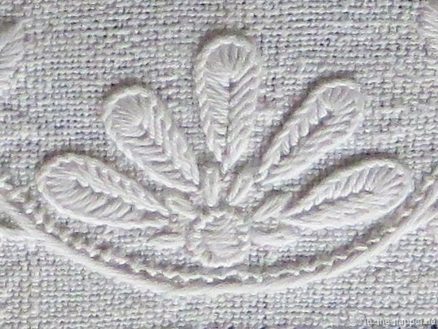
Small, pointed leaves, connected with stem stitches, fill in the gaps.
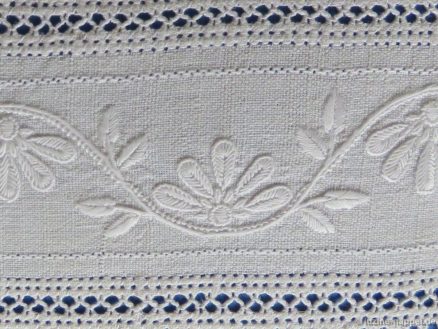
In this example, the wavy line is formed from Coral Knot and Stem stitches, with the lines crossing after each wavy.
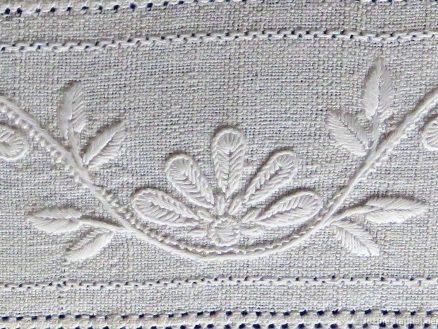
The curved line pattern is bordered at the top and bottom by a narrow hemstitch with a simple wrapping stitch pattern.
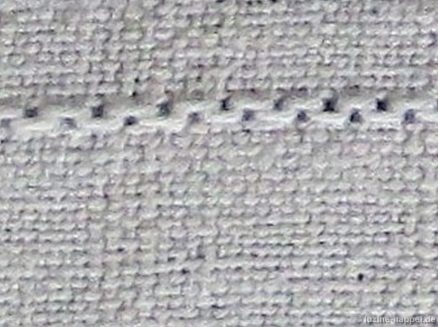
The coloured ticking supports the magnificent effect of the needle-weaving hem.
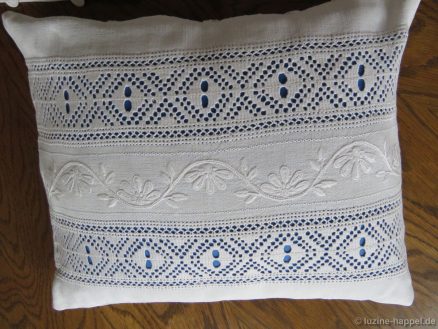
Needle-Weaving Cushion D
Needle-Weaving Cushion C
Needle-Weaving Cushion B
Needle-Weaving Cushion A
In my documentation Schwalm Needle-Weaving Bands I have already shown 193 (!) different patterns .
Information on the individual categories and detailed descriptions of the working methods can be found in Lesson #4 – Needle-Weaving Band Sampler.
